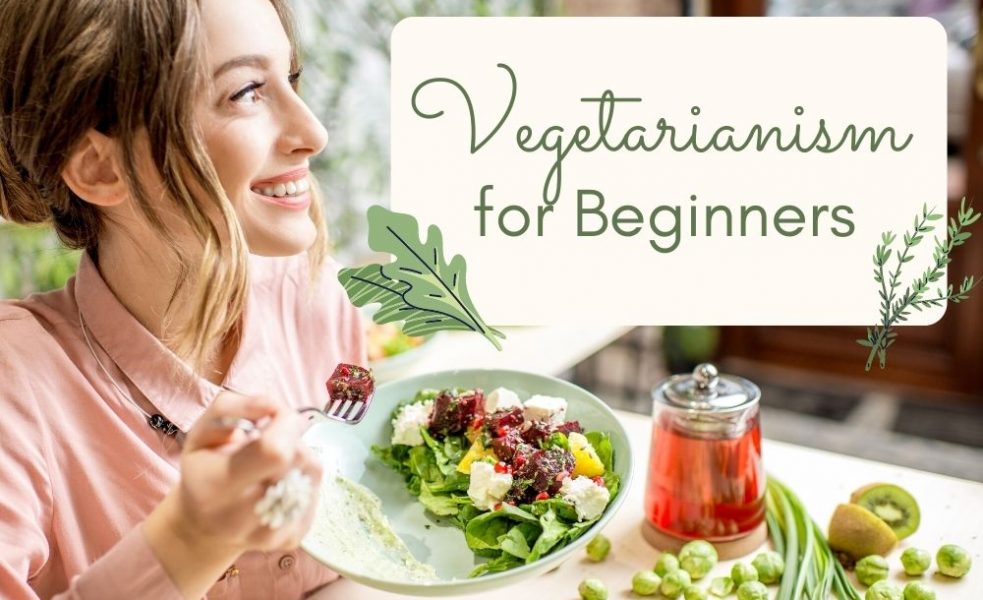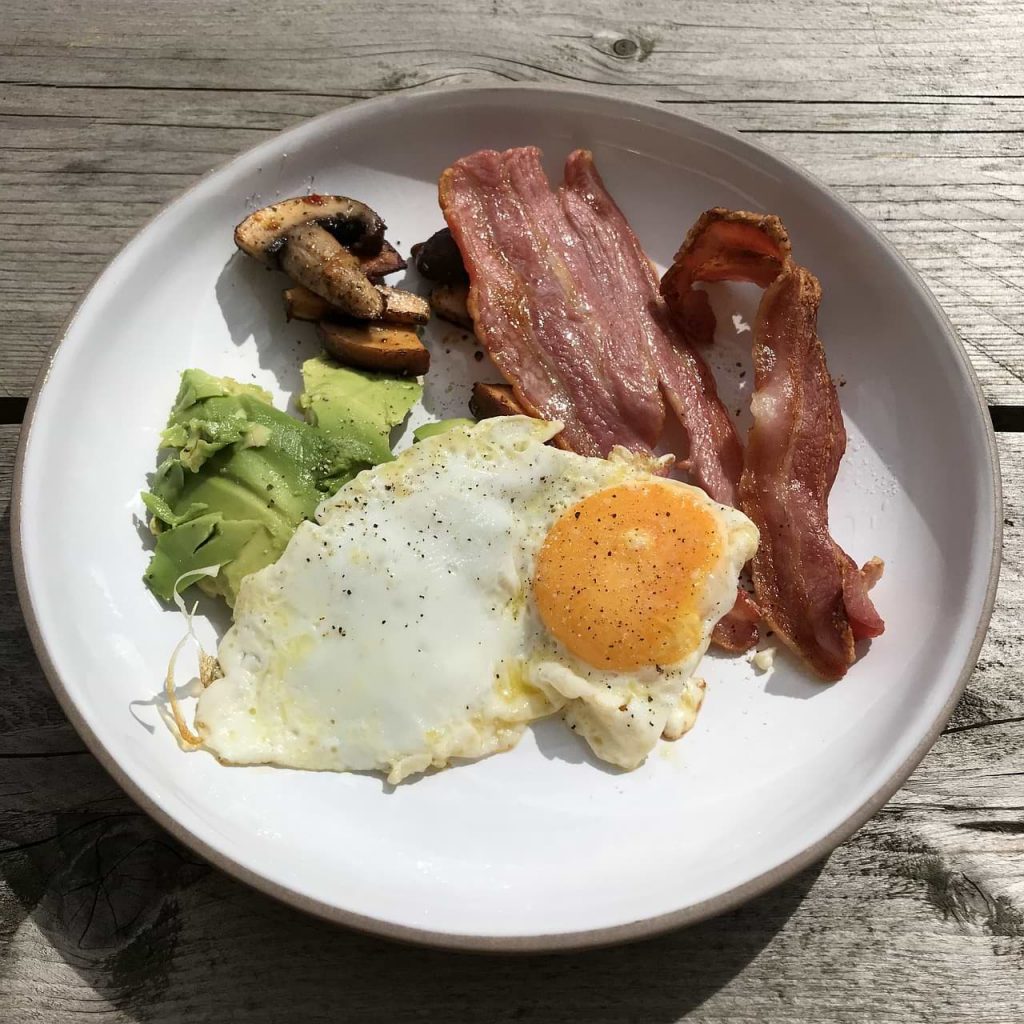The fact that only five percent of the US population are vegetarians, and less than half a percent are vegans, show that switching to an animal-free lifestyle is not an easy choice for everyone – and it’s OK.
Whether you’re trying to go vegetarian because of a health condition, or you’ve been convinced to go for cruelty-free products, or simply because you prefer a diet of fruits and vegetables over meat, there’s one thing you should know: everyone’s road to vegetarianism is different.
Some see vegetarianism as a stepping stone towards veganism, while others simply want to cut meat but not other animal products out of their life.
If you’re planning on switching to a vegetarian lifestyle, however, you may have a lot of questions. This guide can answer all the common questions of vegetarianism, as well as a vegetarian food list of common food items newbies may not be sure is appropriate for their diet.
Vegetarian vs. Vegan
One common question I get is the difference between vegetarians and vegans. For those who don’t know the difference, it can seem like these two terms are interchangeable because they’re similar in the sense that both diets refuse animal meat.
But aside from that, there is a major difference between vegetarianism and its multiple forms and veganism.
What Is a Vegetarian Diet?
A vegetarian is someone who doesn’t eat meat, poultry, fish, or anything that came from a dead animal (e.g. bone marrow). To sustain their daily nutritional needs, vegetarians eat fruits, vegetables, grains, nuts, and seeds.
There are, however, multiple types of vegetarians based on how far some people draw the line on animal products. For instance, you don’t have to kill a chicken to harvest its eggs or a cow to milk its udders, so some vegetarians choose to add eggs and dairy to their diet.
Depending on whether they choose to add only eggs or only dairy, they can be classified into:
- Ovo vegetarian – consumes eggs but not dairy products
- Lacto vegetarian – abstains from eggs, but eats dairy products
- Lacto-ovo vegetarian -includes both eggs and dairy in their diet
And then there are also pescatarians who, while they don’t eat animal meat, consume fish. However, some serious vegetarians who avoid fish, eggs, and dairy do not consider these types of diets as vegetarian.
What Is a Vegan Diet?

Veganism is a much stricter form of vegetarianism. While vegetarianism is focused solely on diet, veganism expands to both diet and lifestyle to avoid animal exploitation at all costs.
Like vegetarians, a vegan will avoid all animal products, including eggs and dairy. However, they will take it a step further and avoid all animal-derived ingredients like gelatin and honey, as well as food substances like carmine, pepsin, albumin, and whey, which are made from animals or from animal by-products.
Vegans will also reject anything made from animals and animal by-products from a non-food perspective. A person who becomes vegetarian for health purposes may have no qualms about wearing clothes made from real fur, using cosmetics from a company that tests their products on animals, and watching performances that involve animals.
A vegan, however, will refuse to wear real fur, opt to buy their cosmetics from cruelty-free businesses, and even boycott entertainment businesses that use animals. So, in a way, all vegans are vegetarians, but not all vegetarians are vegans.
Should I Go Vegetarian or Vegan?
While this is a personal preference, you should always consult with a doctor or nutritionist in case you want to go vegetarian or vegan. Abruptly changing your diet may deprive you of the nutrients you normally get from your meat and dairy. It also helps to read up on nutrient alternatives to the vitamins and nutrients often found in animal products.
Going vegetarian is often seen as a stepping stone to slowly transitioning to veganism, but it doesn’t always have to be. Veganism is a whole lifestyle change. Slowly adapt to a vegetarian diet first and determine if you can totally go animal-free.
Going Out to Eat

It can be difficult planning where to eat, especially if you’re with family and friends who don’t practice no-meat diets. They would usually suggest restaurant options that aren’t vegetarian or vegan-friendly, while some restaurants that advertise vegetarian options may use butter, eggs, or dairy products that you might not be comfortable with. Here are some tips to help you with this.
Put Your Foot Down
No one is going to take your switch to vegetarianism seriously if you constantly set it aside because no one automatically accommodates to your needs. Eating out for you doesn’t necessarily mean going to a Salad and Go. There are plenty of restaurants that serve vegetarian and vegan meals aside from meat-based meals, so ask your friends and family to be more conscious about this when choosing a place.
There may be cases where your friends or family will insist on a restaurant that doesn’t have food options for you. In this case, you have three options: call the restaurant to see if they can make special vegetarian dishes, bring your own snack, or simply decline their invitation to eat out.
Check the Menu
Most restaurants have their menu available online, so you can do your research ahead of time and find vegetarian-friendly options. They usually use special symbols that indicate if a dish is vegetarian or vegan.
Ask for Special Requests
Plenty of sit-down restaurants allow special requests for people with special diets. Their chefs can make something vegetarian that isn’t on the menu or modify a dish to remove all meat and animal products.
If you’ve been invited to special occasions like weddings or dinner parties, inform the host ahead of time of your dietary restrictions. They can inform their caterer and provide you with a vegetarian meal.
Eating Fast Food
Going vegetarian does not necessarily mean giving up fast food, but it can be difficult. Plenty of fast food items have meat, but if you’re a vegetarian, you might find a limited number of fast-food items you can eat. A few of these include:
- In-N-Out: vegetarian and vegan options like their french fries, veggie burger (remove the In-N-Out spread to make it vegan), and grilled cheese;
- Burger King: veggie burger and fries;
- Chick-fil-A: Waffle fries with Chick-fil-A sauce;
- Arby’s: mozzarella sticks and curly fries;
- Bojangles: Cheddar Bo, mac and cheese, seasoned fries;
- Del Taco: Eight-layer veggie burrito, mini cheddar quesadilla;
- KFC: Mac & cheese, coleslaw, potato wedges;
- McDonald’s: Egg and cheese McMuffin, hash browns.
Not all these vegetarian options may slide from those who are strictly against dairy and eggs.
Creating Your Vegetarian Food List
Contrary to what people with omnivorous diets think, a vegetarian diet should not be limited to just fruits and vegetables. There are also grains, nuts, seeds, tofu, and healthy fats and proteins. If you’re going vegetarian, it’s important to know the nutrients in these foods to maintain a healthy diet and still get the daily nutrition you need.
Meat is rich in protein, but if you’re not giving up eggs and dairy, you won’t have a problem getting your protein from it. If you are, though, you may have to add nuts, seeds, legumes, and tofu into your diet as an alternative protein source.
In terms of meal plans, it is best to consult your doctor to check if your body has a current nutritional deficiency. You might not feel the deficiency now, but it may get worse if you suddenly switch to a plant-based diet.
From your doctor’s recommendation, you can then see a nutritionist who can help you create a feasible meal plan based on your nutritional needs and allergies. Some types of foods may be expensive and out of your budget or unavailable in your area, so you may have to find an alternative or take supplements to make up for any deficiencies.
Ideally, your vegetarian food list should include:
- Fruits (citruses, berries, cantaloupes, bananas, etc.)
- Vegetables (leafy greens, root crops)
- Grains (quinoa, rice, barley, oat)
- Legumes (beans, peas, lentils)
- Nuts (almonds, cashews, chestnuts)
- Seeds (flaxseeds, sunflower seeds, chia seeds)
- Vegetable Fat
- Protein sources (tofu, eggs, vegetarian cheese, gelatin, dairy products)
Not Everything Is Healthy

Just because something is vegetarian or vegan-friendly does not necessarily mean it’s healthy. For instance, did you know that Coca-Cola is actually vegetarian-friendly, while Coca-Cola in Cherry, Vanilla, and Orange Vanilla flavors are vegan-friendly? That doesn’t necessarily make it healthy.
It’s OK to Slip Up from Your Diet
For those just switching to a vegetarian diet, you might accidentally eat a meat-based product or find yourself giving into temptation and eating meat.
It’s OK to slip up from your diet, especially if you’ve just started or have tried going cold turkey from meat. What matters is that you don’t see this as an excuse to stop your vegetarian diet.
If you’re having trouble weaning off meat and animal products, try cutting down before cutting it completely out of your diet. Try limiting yourself to two meat-based meals a day and making one meal vegetarian. Then drop that to one meat-based meal. Then try having days where all meals are vegetarian, and then have one meat meal the next day.
Eventually, you may find that it will be easier cutting meat out completely.
Going vegetarian may not be easy for everyone, but the fact that you’re trying means that you’re willing to go down this path. And it’s a path that benefits your health, your diet, and the animals that get to live because of your decision to go vegetarian.



